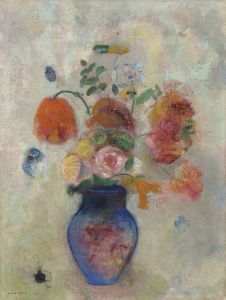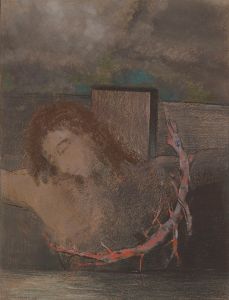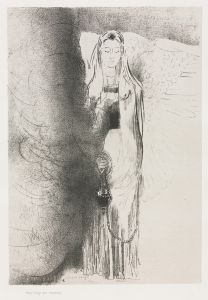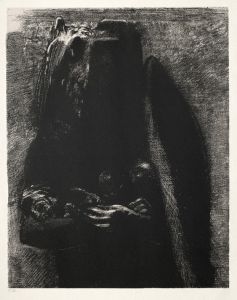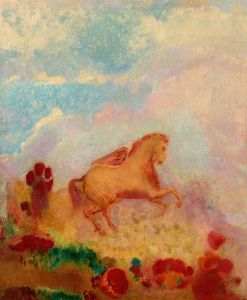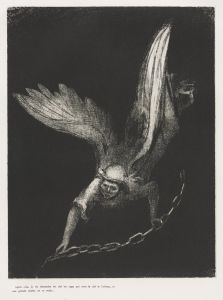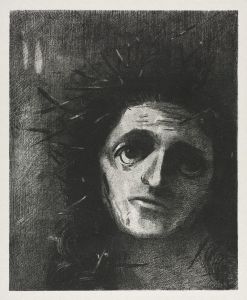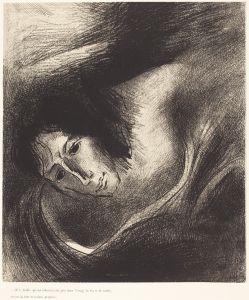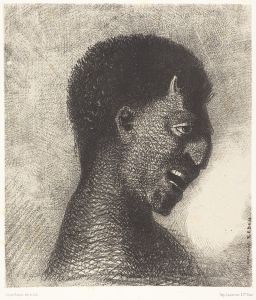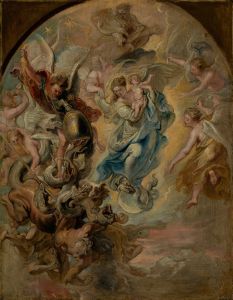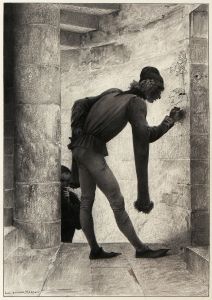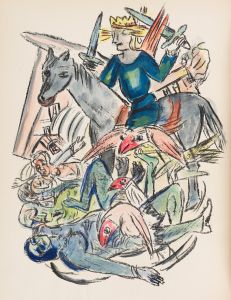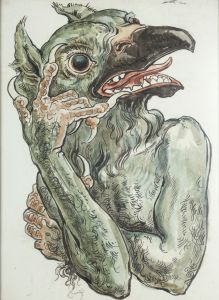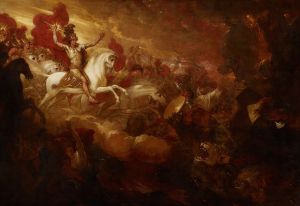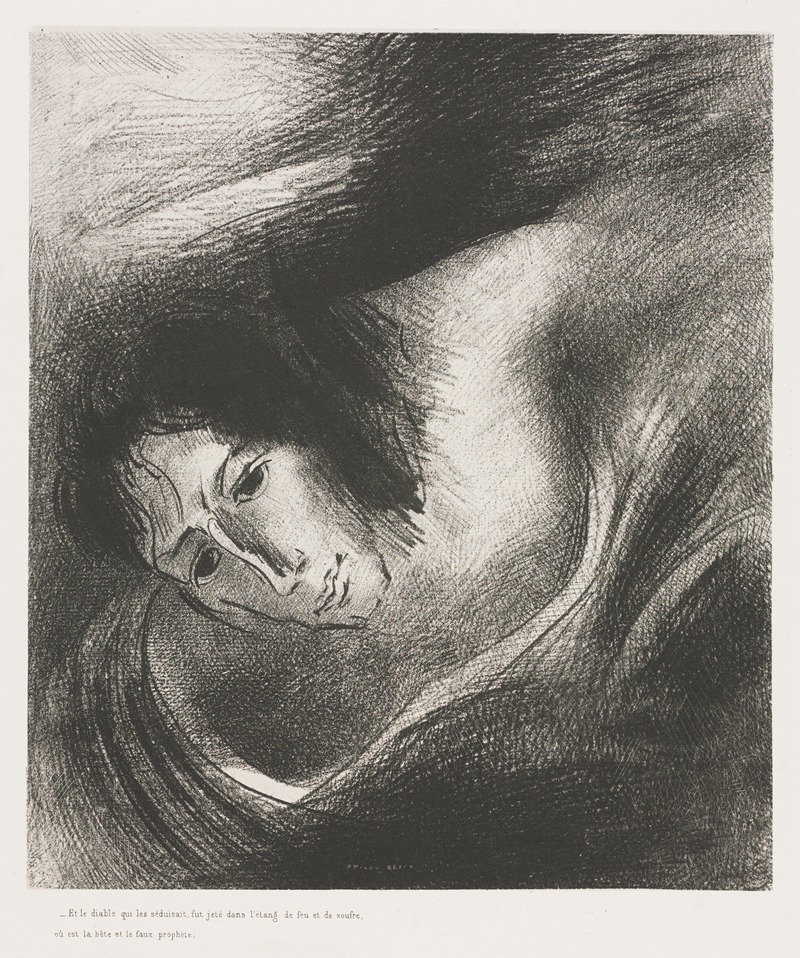
And the Devil That Deceived Them was Cast into the Lake of Fire and Brimstone, Where the Beast and the False Prophet Are
A hand-painted replica of Odilon Redon’s masterpiece And the Devil That Deceived Them was Cast into the Lake of Fire and Brimstone, Where the Beast and the False Prophet Are, meticulously crafted by professional artists to capture the true essence of the original. Each piece is created with museum-quality canvas and rare mineral pigments, carefully painted by experienced artists with delicate brushstrokes and rich, layered colors to perfectly recreate the texture of the original artwork. Unlike machine-printed reproductions, this hand-painted version brings the painting to life, infused with the artist’s emotions and skill in every stroke. Whether for personal collection or home decoration, it instantly elevates the artistic atmosphere of any space.
Odilon Redon, a prominent French symbolist painter, created the artwork titled "And the Devil That Deceived Them was Cast into the Lake of Fire and Brimstone, Where the Beast and the False Prophet Are." This piece is part of Redon's broader body of work that often explores themes of spirituality, mythology, and the fantastical. Redon was known for his unique ability to blend reality with dream-like imagery, often drawing inspiration from literature, religion, and his own imagination.
Born in 1840 in Bordeaux, France, Odilon Redon developed a distinctive style that set him apart from his contemporaries. He initially studied under Jean-Léon Gérôme and later worked with Rodolphe Bresdin, who influenced his early charcoal drawings and lithographs. Redon's work is characterized by its ethereal quality and often features symbolic and mystical elements.
The title of the artwork, "And the Devil That Deceived Them was Cast into the Lake of Fire and Brimstone, Where the Beast and the False Prophet Are," is a direct reference to a passage from the Book of Revelation in the Bible. This passage describes the final judgment and the ultimate defeat of evil forces, a theme that resonates with Redon's interest in exploring the boundaries between good and evil, reality and fantasy.
Redon's work often reflects his fascination with the unseen and the mysterious. He was part of the Symbolist movement, which sought to express the ineffable and the abstract through art. This movement was a reaction against the naturalism and realism that dominated the art world in the late 19th century. Instead of depicting the world as it is, Symbolists like Redon aimed to evoke emotions and ideas through symbolic imagery.
In "And the Devil That Deceived Them was Cast into the Lake of Fire and Brimstone, Where the Beast and the False Prophet Are," Redon likely employed his characteristic use of color and form to create a sense of otherworldliness. His use of vibrant colors and dream-like compositions often evoke a sense of mystery and introspection, inviting viewers to interpret the work on a personal level.
Redon's art was not widely recognized during his early career, but he gained significant acclaim later in life. His work influenced many 20th-century artists, including the Surrealists, who admired his ability to convey the subconscious and the dream-like through his art. Today, Redon's paintings and drawings are celebrated for their innovative approach to symbolism and their contribution to the development of modern art.
While specific details about the creation and exhibition history of "And the Devil That Deceived Them was Cast into the Lake of Fire and Brimstone, Where the Beast and the False Prophet Are" may not be extensively documented, the artwork remains an important part of Redon's oeuvre, reflecting his enduring interest in the mystical and the metaphysical.





